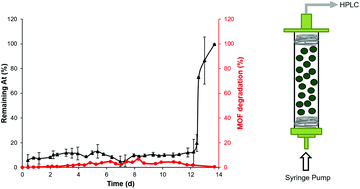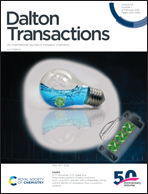Metal–organic frameworks for the removal of the emerging contaminant atenolol under real conditions†
Abstract
Pharmaceutical and personal care products (PPCPs) are regarded as an emerging class of contaminants, which are often released directly into the environment, causing severe deleterious effects. In particular, the widely prescribed β-blocker atenolol (At) is alarmingly present in water. Despite the toxicity caused by At, no specific methods are currently available for its efficient removal. Here, 8 highly porous metal–organic frameworks (MOFs) with a priori remarkable aqueous stability and exceptional porosity were proposed for the removal of At. A robust nickel bispyrazolate MOF (Ni8BDP6) was selected as the most promising adsorbent, further improving its At decontamination efficiency (92–100%) and stability (<1% degradation) by using its defective version, KOH@Ni8BDP6. Finally, the At removal was studied for the first time using a MOF-continuous flow column-device under realistic conditions (tap drinking water and river water, and considering the MOF integrity), achieving a very high contaminant removal efficiency for consecutive 12 days (ca. 90%) and envisioning the future real application of MOFs in water remediation.



 Please wait while we load your content...
Please wait while we load your content...